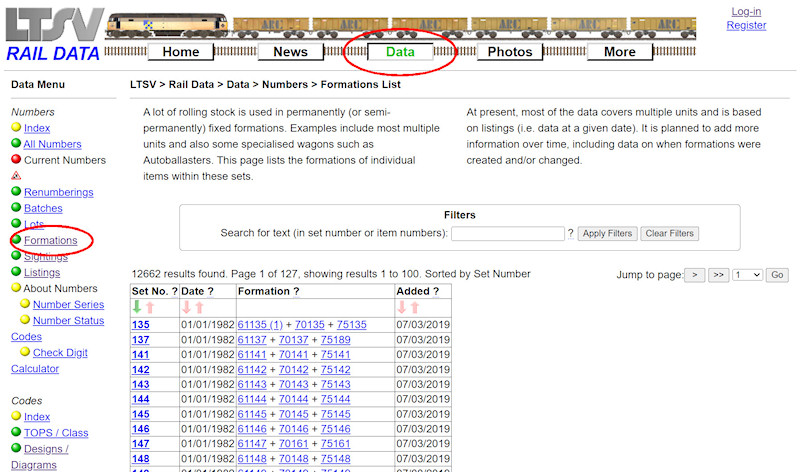
There are various other pages in the Data section, which I will look at only briefly as they work on the same principles as all others. Shown here is the
Formations List page. Formations are mainly of multiple-units or coaching sets. As with listings, formations are snap-shots at particular dates, so one set may be listed several times.

The only filter on this page is a number search. This looks for numbers (in either the set number or the items) that start with your input. Set numbers include two types. The first are numbers that exist in the numbers table (such as TOPS unit number 484005), the second is numbers that do not exist in the numbers table (such as the unofficial set numbers by which class 501 units were sometimes referred to.

To give another example, these sets numbered in the GWxx series are GWR class 255 HST sets, but the GWxx numbers are not in the LTSV-RD database. Note also how one set can have multiple listings. These are shown in date order from the oldest to the newest.

The search looks for the beginning of each number, hence searching for 115 returns no results, as no formations contain a number starting with 115.

If you use the % wildcard, you can find all formations with numbers that contain 115 (such as items 61150 and 48115, and set 1115). The % wildcard matches any number of characters.

The underscore is another wildcard, but this matches any single character. This can be useful. Say you wanted to find any 5-digit number ending in 115, you could search for
__115 (i.e. two underscores then 115).

Clicking any number within a formation will open the relevant
Number Details page. However, if you click on the link in the
Set No column, you will get to the
Formation Details page, as shown here. This will show the source of the information, plus any details of any notes or edits. The link on the set number here will take you to the
Number Details page.

In the
About Numbers section of the Data submenu are two links. The first will open the list of all the different number series. These are crucial to the way the LTSV-RD database works. The quantity of numbers in each series is shown, though this is only the quantity of numbers in the LTSV-RD database, not necessarily the total quantity of numbers that have been used.

Clicking on any number series code will open the
Number Series Details page as shown. This shows all the details and also has buttons to view related data. These all link to pages that have already been covered in this user guide. Any notes about the number series will also be shown.
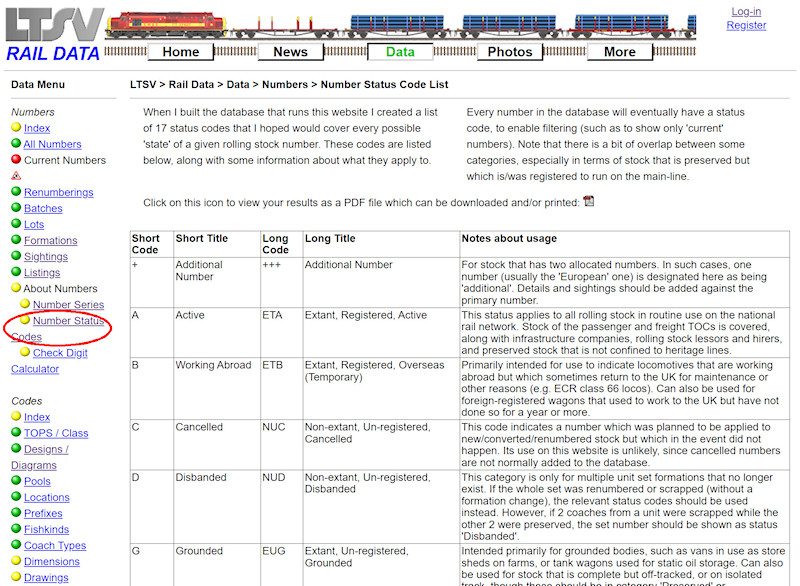
The other
About Numbers page is the list of Number Status Codes. This is another aspect that is important to how the database works but which users probably don't need to know too much about.
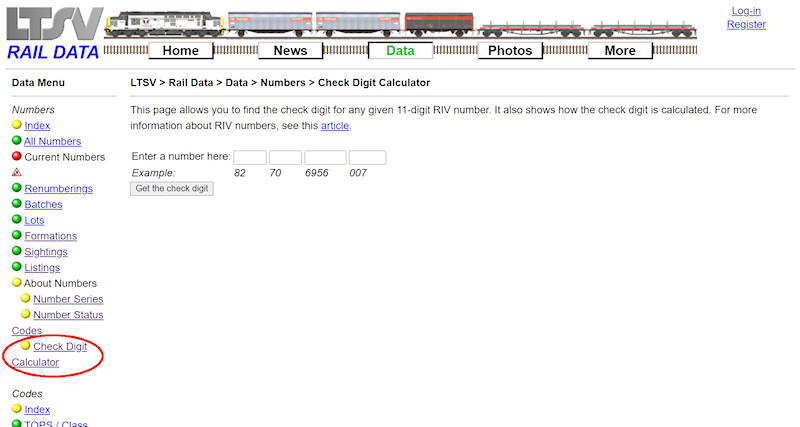
Continuing down the menu, the next link is to the
Check Digit Calculator. This can be used to work out the check digit for RIV numbers (also known as European Vehicle Numbers).

To use this page, enter a number in the boxes, separating it into sections as follows:
Digits 1 and 2 - The exchange code
Digits 3 and 4 - The country code
Digits 5 to 8 - The class/type block
Digits 9 to 11 - The serial number
Then click on the
Get the check digit button.

The page will then show the full number (with check digit), as well as revealing how the check digit is calculated.
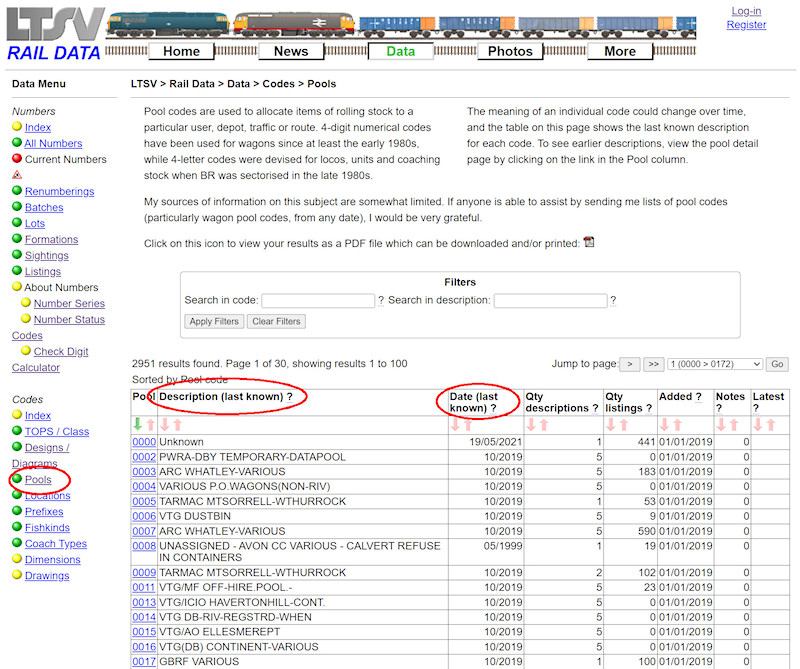
In the Codes section of the Data submenu is a link to the Pools List page, as shown here. Note that the meanings of pool codes can change over time. The last known description is shown for each, along with the date when the information was current.
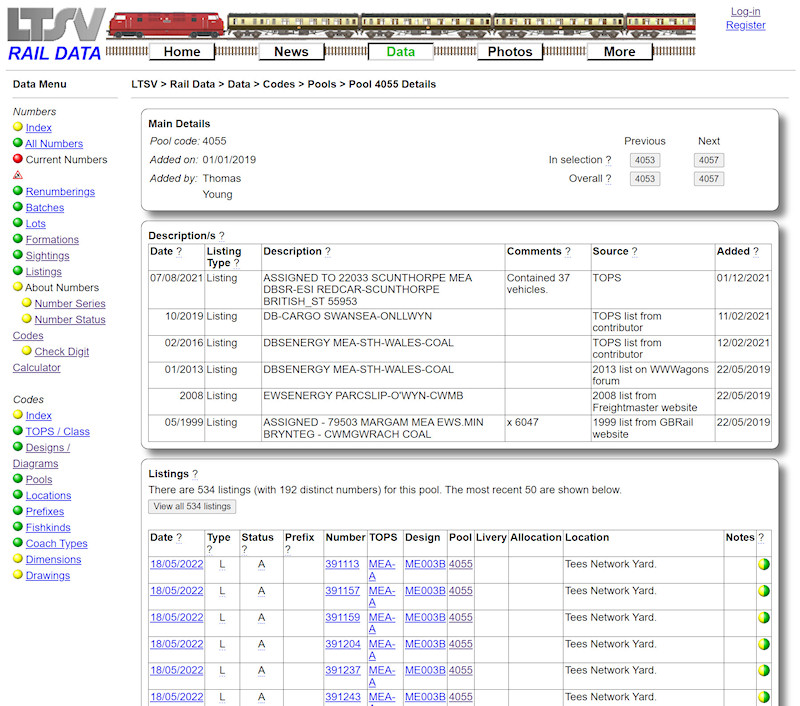
Navigation, sorting and filtering here is similar to other list pages. Clicking on any pool code will open the
Pool Details page. The first box contains the main details (along with buttons to view the previous and next items). The second box lists all known descriptions for this pool, showing the date and source of the information. The third box shows listings related to this pool. There is a fourth box below this, which will show any posted notes.

The
Locations List page shows all locations to which rolling stock has been allocated. It can be navigated, sorted and filtered as per other list pages. The data includes the quantity of listings and notes related to each location.

Clicking on any location name will open the
Location Details page. This shows the main details, any related notes and edits, plus any relevant listings. Up to 50 listings are shown, with a button to view all (if required). Listings are shown with the most recent first. Here it can be seen that Aberdeen Ferryhill had an allocation of 3 08s in 1989 and of 6 08s in 1981. Listings for other dates may be added in due course.

The
Prefix List page shows all known prefixes that have been used. It shows what stock the prefix applied to and what it signified. Note that some prefixes had multiple meanings. For example, M could mean a BR coach allocated to the Midland Region, or a BR wagon that was built by the LMS. It was also briefly used by Mainline Freight in the 1990s. Navigate, sort or filter as usual.

Clicking on any prefix will open the Prefix Details page. This shows the basic information, any related listings, plus any notes and/or edits.
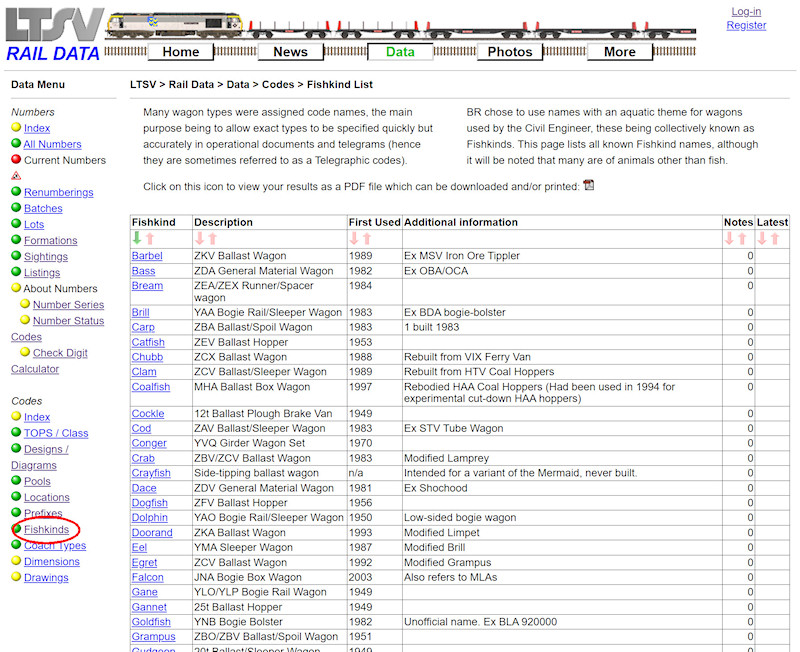
The
Fishkinds List includes all the known marine code names used to identify Civil Engineer's rolling stock.

Clicking on any Fishkind name will open the relevant detail page. Besides the usual main details, notes and edits section, this page will show links to any relevant profile articles.
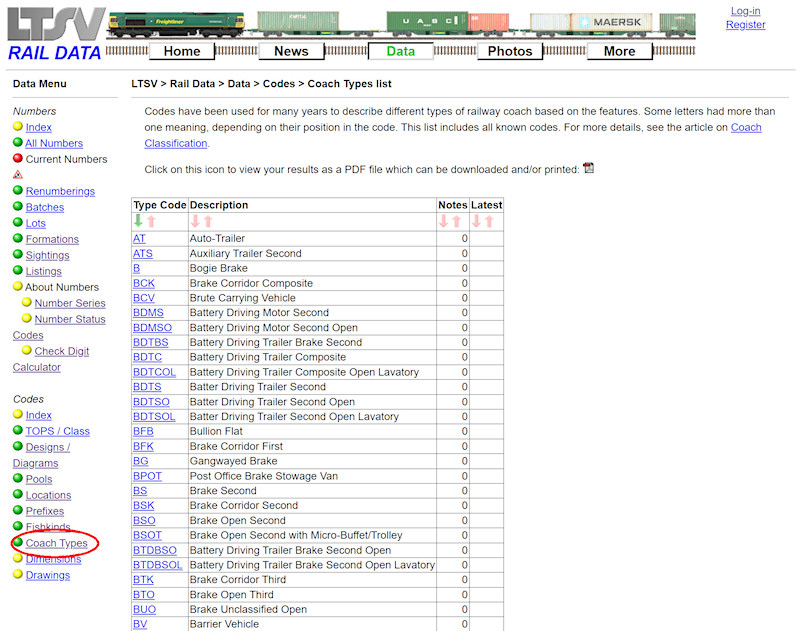
The
Coach Types page lists all known abbreviations used to identify different coach types (such as BDTSOL).
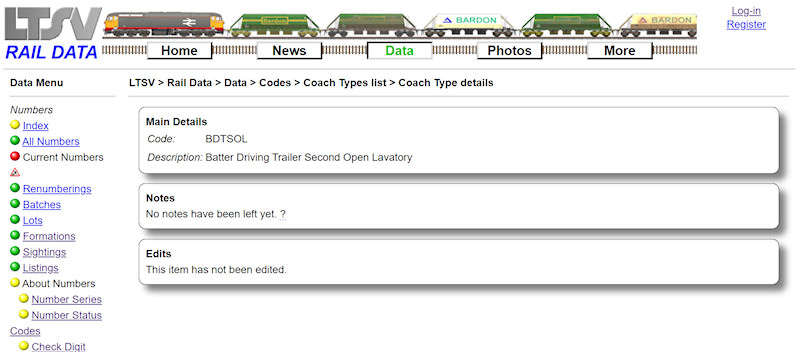
Click on any code to open the detail page, though there probably won't be much on it!

The
Dimensions page lists dimensions that have been added to the LTSV-RD database (fewer than 600 so far). Dimensions can cover various aspects and units (length, weight, seats, etc) and are usually related to a particular design/diagram.

The dimension list can be filtered to find particular information, but you will need to know the ID of the design/batch/TOPS code you are looking for. For example, BR coach diagram 25 has an ID of DBCD-025. It would be simpler to look at the relevant
Design Details page (see section 1.2.3).

There is a
Dimension Details page (accessed by clicking on the ID in the list page). The main use for this would be to see the source of the information.
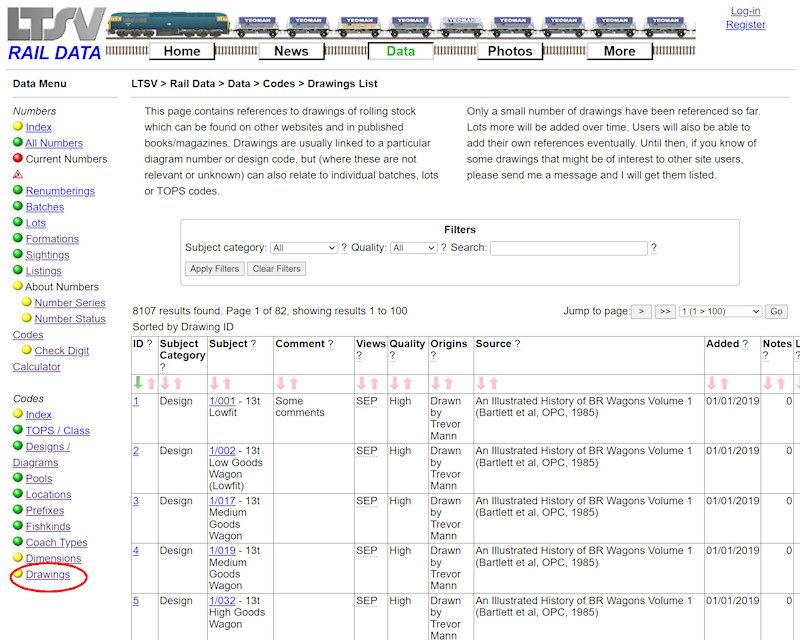
Finally there is the
Drawings List page. It should be pointed out that this will tell you where you can find drawings, but the drawings themselves are not in the LTSV-RD website. Most drawings are linked to a particular design/diagram. The
Views column shows whether the drawing has elevations, plans, end-views etc (hover for an explanation).
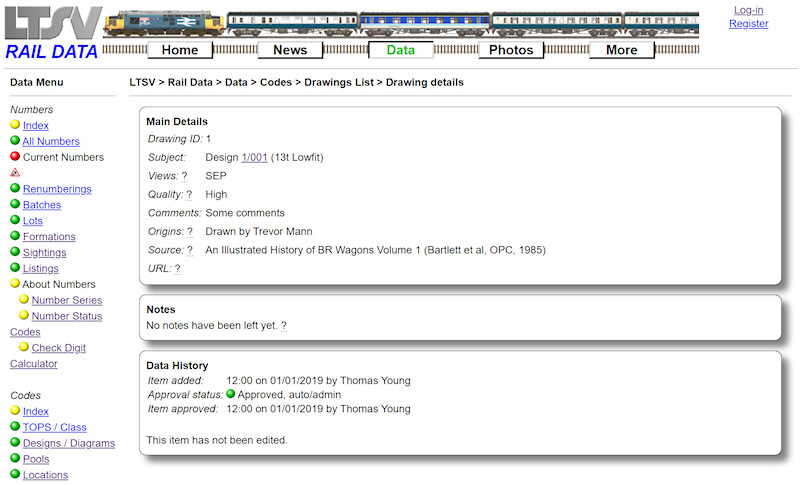
As you may have guessed, there is a
Drawing Details page (accessed by clicking a drawing ID number on the list page), though there is little on it that is not visible in the list page.

 Register
Register